The 404 status code may not be right choice because the resource that has not been found is not the target of your request:
6.5.4. 404 Not Found
The 404 (Not Found) status code indicates that the origin server did
not find a current representation for the target resource or is not
willing to disclose that one exists. A 404 status code does not
indicate whether this lack of representation is temporary or
permanent; the 410 (Gone) status code is preferred over 404 if the
origin server knows, presumably through some configurable means, that
the condition is likely to be permanent.
The 409 status code might be suitable for this situation, but is not be the best choice (I wouldn't define this situation as a conflict):
6.5.8. 409 Conflict
The 409 (Conflict) status code indicates that the request could not
be completed due to a conflict with the current state of the target
resource. This code is used in situations where the user might be
able to resolve the conflict and resubmit the request. The server
SHOULD generate a payload that includes enough information for a user
to recognize the source of the conflict. [..]
I would go for 422 status code with a clear description in the response payload:
11.2. 422 Unprocessable Entity
The 422 (Unprocessable Entity) status code means the server
understands the content type of the request entity (hence a
415 (Unsupported Media Type) status code is inappropriate), and the
syntax of the request entity is correct (thus a 400 (Bad Request)
status code is inappropriate) but was unable to process the contained
instructions. For example, this error condition may occur if an XML
request body contains well-formed (i.e., syntactically correct), but
semantically erroneous, XML instructions.
If 422 doesn't work for you, use the generic 400:
6.5.1. 400 Bad Request
The 400 (Bad Request) status code indicates that the server cannot or
will not process the request due to something that is perceived to be
a client error (e.g., malformed request syntax, invalid request
message framing, or deceptive request routing).
The following diagram (extracted from this page) is pretty insightful when it comes to picking the most suitable 4xx status code:

